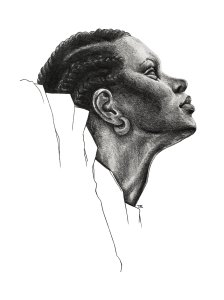 Like many from the dominant culture, I thought I had an understanding of racism. I have a degree in history and I thought I knew something about the civil war, the evils of slavery, and it’s lasting legacy of pain. But the events of the past few months have opened my eyes to how little I truly understood about the deep history of racism and the infinite ways in which its pervasive virulence continues to wound the world.
Like many from the dominant culture, I thought I had an understanding of racism. I have a degree in history and I thought I knew something about the civil war, the evils of slavery, and it’s lasting legacy of pain. But the events of the past few months have opened my eyes to how little I truly understood about the deep history of racism and the infinite ways in which its pervasive virulence continues to wound the world.
A major reason we practice mindfulness is to reduce suffering, our own and that of other people. In a recent talk, Jack Kornfield suggested that we individually commit to awakening around racial injustice. He vowed to mention race in each of his talks. My own commitment is to educate myself and to share what I find most helpful.
The 4th of July, that day we are reminded of the unfulfilled hope of our founding promise that all people are created equal, seems a particularly apt day to begin this sharing, and the poet Carol Randall Williams’s recent op-ed in the New York Times–”You Want a Confederate Monument? My Body Is a Confederate Monument“–is a good place to start. (If you can’t access this on the New York Times site, you can read a pdf here.)
Some excerpts:
I have rape-colored skin…
“It is an extraordinary truth of my life that I am biologically more than half white, and yet I have no white people in my genealogy in living memory. No. Voluntary. Whiteness. I am more than half white, and none of it was consensual. White Southern men — my ancestors — took what they wanted from women they did not love, over whom they had extraordinary power, and then failed to claim their children.
What is a monument but a standing memory? An artifact to make tangible the truth of the past. My body and blood are a tangible truth of the South and its past. The black people I come from were owned by the white people I come from. The white people I come from fought and died for their Lost Cause. And I ask you now, who dares to tell me to celebrate them? Who dares to ask me to accept their mounted pedestals?
You cannot dismiss me as someone who doesn’t understand. You cannot say it wasn’t my family members who fought and died. My blackness does not put me on the other side of anything. It puts me squarely at the heart of the debate. I don’t just come from the South. I come from Confederates. I’ve got rebel-gray blue blood coursing my veins. My great-grandfather Will was raised with the knowledge that Edmund Pettus was his father. Pettus, the storied Confederate general, the grand dragon of the Ku Klux Klan, the man for whom Selma’s Bloody Sunday Bridge is named. So I am not an outsider who makes these demands. I am a great-great-granddaughter.
Illustration by PS Spencer in The New York Times.
You can access extensive anti-racism resource lists complied by Tara Brach, Jack Kornfield and others by clicking on the “Mindful of Race” tab in the top menu. And you can access blog posts on this topic by clicking on “Mindful of Race” in the category list in the sidebar. I borrowed the term from the title of Ruth King’s profound book Mindful of Race: Transforming Racism from the Inside Out.

Thank you, Teresa! It’s amazing how so many of us thought that we understood something and now we see how little we really understood. I’m so grateful to finally be learning so much. xox. Kim